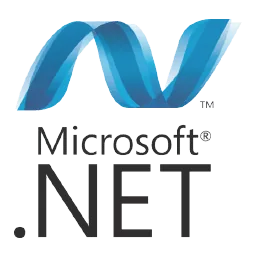Microsoft .NET Framework 4.8.1 Build 9037

Microsoft .NET Framework 4.8 is a runtime execution environment that manages applications targeted the .NET Framework. It consists of the common language runtime, which provides memory management and other system services. Also an extensive class library, which enables programmers to take advantage of robust, reliable code for all major areas of app development.
This redistributable package installs the .NET Framework runtime and associated files required to run applications developed to target the .NET Framework.
The Microsoft .NET Framework 4.8 is a highly compatible, in-place update to the Microsoft .NET Framework 4, 4.5, 4.5.1, 4.5.2, 4.6, 4.6.1, 4.6.2, 4.7, 4.7.1 and 4.7.2. The offline package can be used in situations where the web installer cannot be used due to lack of internet connectivity.
BUY NOW Microsoft products with Discount
The .NET Framework is a managed execution environment that provides a variety of services to its running applications. It consists of two major components: the common language runtime (CLR), which is the execution engine that handles running applications. And the .NET Framework Class Library, which provides a library of tested, reusable code that developers can call from their own applications.
Microsoft .NET Framework provides services:
- Memory management. In many programming languages, programmers are responsible for allocating and releasing memory and for handling object lifetimes. In .NET Framework applications, the CLR provides these services on behalf of the application.
- A common type system. In traditional programming languages, basic types are defined by the compiler, which complicates cross-language interoperability. In the .NET Framework, basic types are defined by the type system and are common to all languages that target the .NET Framework.
- An extensive class library. Instead of having to write vast amounts of code to handle common low-level programming operations, programmers can use a readily accessible library of types and their members from the .NET Framework Class Library.
- Development frameworks and technologies. The .NET Framework includes libraries for specific areas of application development. ASP.NET for web applications. ADO.NET for data access. Windows Communication Foundation for service-oriented applications.
- Language interoperability. With this feature, routines written in one language are accessible to other languages. And programmers can focus on creating applications in their preferred language or languages.
- Version compatibility. With rare exceptions, applications that are developed by using a particular version of the .NET Framework can run without modification on a later version.
- Side-by-side execution. The .NET Framework helps resolve version conflicts by allowing multiple versions of the common language runtime to exist on the same PC.
- Multitargeting. By targeting the .NET Framework Portable Class Library, developers can create assemblies that work on multiple .NET Framework platforms.
What’s New in Microsoft .NET Framework 4.8.1:
Native support for Arm64
- Add native Arm64 support to the .NET Framework family to leverage the benefits of running workloads natively on Arm64 for better performance when compared to running x64 code emulated on Arm64.
Accessible Tooltips
- tooltips now comply with the guidelines set forth in the WCAG2.1 content on Hover or Focus guidance. The requirements for tooltips require the following:
- Tooltips must display either via mouse hover or by keyboard navigation to the control.
- Tooltips should be dismissable. That is, a simple keyboard command like the ESC key should dismiss the tooltip.
- Tooltips should be hoverable. Users should be able to place their mouse cursor over the tooltip. This enables scenarios like using magnifier to be able to read the tooltip for low-vision users.
- Tooltips should be persistent. Tooltips should not automatically disappear after a certain time has elapsed. Rather, the tooltips should be dismissed by the user moving their mouse to another control, or by dismissing the tooltip as described above.
Windows Forms
- Added support for the UIA Text Pattern to enable assistive technology to traverse the content of a TextBox or similar text-based control letter by letter.
- Fixed high contrast issues in several controls and have changed the contrast ratio of selection rectangles to be darker and more visible.
- Fixed several DataGridView issues:
- Updated the scrollbar names for consistency.
- Fixed an issue where Narrator was unable to focus on empty DataGridView cells.
- Enabled developers to set the localized control type property for Custom DataGridView cells.
- Updated the link color for DataGridViewLink cells to have better contrast with the background.
What’s New in Microsoft .NET Framework 4.8:
Homepage – https://www.microsoft.com/net/
Supported Systems for Microsoft .NET Framework 4.8.1:
- Windows 11
- Windows 10 versions: 21H2, 21H1, 20H2
- Windows Server 2022
Supported Systems for Microsoft .NET Framework 4.8:
- Windows Client versions: Windows 10 version 1809, Windows 10 version 1803, Windows 10 version 1709, Windows 10 version 1703, Windows 10 version 1607, Windows 8.1, Windows 7 SP1.
- Windows Server versions: Windows Server 2019, Windows Server version 1803, Windows Server version 1709, Windows Server 2016, Windows Server 2012, Windows Server 2012 R2, Windows Server 2008 R2 SP1
Size: 60.7
DOWNLOAD .NET Framework 4.8.1 x86/x64 [web installer]
DOWNLOAD .NET Framework 4.8.1 x86/x64 [offline installer]
DOWNLOAD .NET Framework 4.8.1 Developer Pack
DOWNLOAD .NET Framework 4.8 x86/x64 [web installer]
DOWNLOAD .NET Framework 4.8 x86/x64 [offline installer]
DOWNLOAD .NET Framework 4.8 Developer Pack
Leave a Reply
0 Comments on Microsoft .NET Framework 4.8.1 Build 9037




 (16 votes, 3.94 out of 5)
(16 votes, 3.94 out of 5)